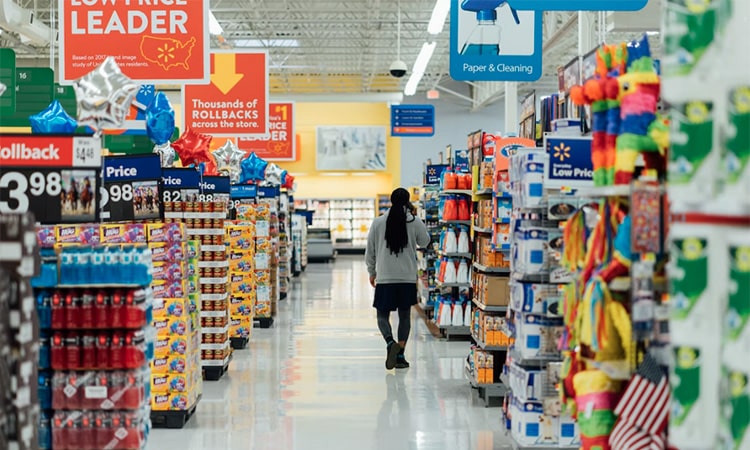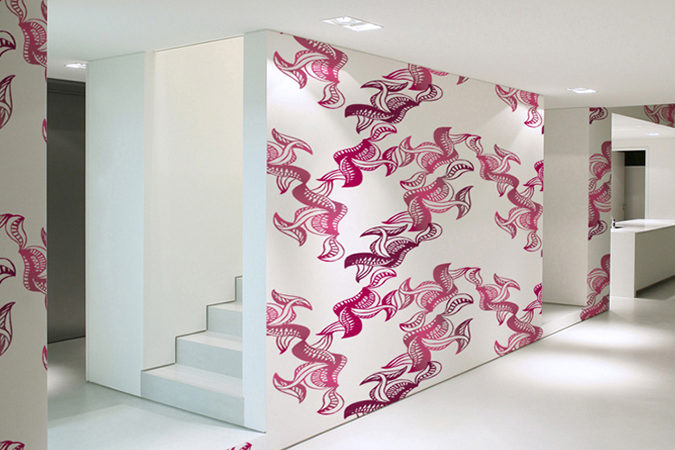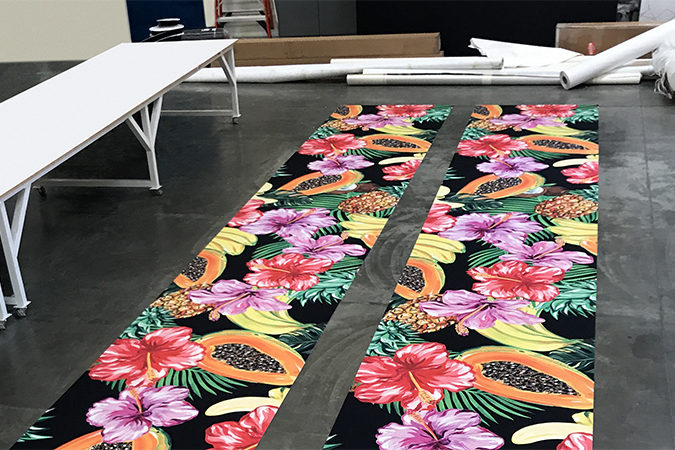
Your retail marketing strategy can make or break your business. You’ll need to develop an effective one to excel in retail—and that includes focusing not just on getting customers in your store but their experience once inside.
What can you do to entice customers once they’re shopping at your retail store? If you want to shift customer engagement to conversions, try point-of-purchase marketing.
This type of marketing makes your products stand out from competitors. Plus, they quickly grab the attention of potential buyers and have the power to increase your sales without greatly expanding your budget.
In this article, we’ll discuss the POP meaning, marketing materials you can use, and the ways it can benefit your business.
Why Point-of-Purchase Displays are Effective in Retail Marketing
Enter any retail store or grocery, and you’ll be met with a tremendous amount of marketing collateral. Posters, banners, pop-up displays, and life-sized cardboard products are some of the things you’ll see.
These are called point-of-purchase displays, or POP. The reason why they’re so ubiquitous is simple – they’re one of the most effective forms of retail advertising.
Increased Product Visibility
Point of purchase displays offer a prime opportunity to showcase products prominently within the store. These displays can be strategically positioned near checkout counters, aisle ends, or high-traffic areas to capture customers’ attention. By showcasing products on eye-catching displays, retailers can increase product visibility and create a strong visual impact, increasing the likelihood of customers noticing and considering the displayed items.
Enhanced Brand Awareness
Custom point of purchase displays provide an excellent platform for retailers to reinforce their brand identity and create a memorable shopping experience. These displays can be designed to incorporate the retailer’s logo, colors, and brand messaging, helping to strengthen brand recognition among customers. The consistent exposure to a brand through well-designed point of purchase displays can leave a lasting impression and increase brand recall.
Impulse Purchases and Cross-Selling
POP displays are effective at triggering impulse purchases. By strategically placing complementary products or related items near the checkout area, retailers can entice customers to make additional unplanned purchases. For example, a display of snacks and candies near the cash register can tempt customers waiting in line. Point of sale displays can also be used to cross-sell or upsell products by featuring complementary or higher-priced alternatives alongside the main product.
Informative and Educative
Point of purchase displays can serve as educational tools by providing relevant information about products or promotions. Retailers can utilize point of sale signs and materials to communicate product features, benefits, and any special offers or discounts. This helps customers make informed decisions and understand the value of the product, ultimately increasing the likelihood of a purchase.
Flexible and Versatile
Point of sale materials come in a wide variety of formats, ranging from banners and standees to shelf talkers and product holders. This versatility allows retailers to adapt their displays to match their branding and accommodate different store layouts, product types, and promotional campaigns. Point of purchase display companies like D’Andrea Visual Communications specialize in creating customized displays that cater to specific retail needs, ensuring maximum impact and effectiveness.
Cost-Effective Marketing
Point of purchase displays offer a cost-effective marketing solution for retailers. Compared to traditional advertising methods, point of purchase marketing requires lower investment and offers a higher return on investment. These displays have a targeted approach, reaching customers at the moment they are ready to make a purchase decision, making them more likely to convert into sales.
From increasing product visibility and brand awareness to driving impulse purchases and educating customers, these displays play a vital role in influencing customers’ buying behavior. By leveraging the flexibility and versatility of point of purchase displays, retailers can effectively promote their products and enhance the overall shopping experience for their customers.
What is a Point of Purchase Display?
A point-of-purchase or POP display is any marketing material that’s often close (but not always) to a product it is advertising. It targets shoppers already ready to buy something, hence the name.
A good example is a freestanding display advertising a 2-for-1 deal on sweaters at the end of the sweater aisle. They’re meant to influence people thinking of buying sweaters to pick a specific style over another.
Often, POP material is placed in strategic areas in a store to help enhance the shopper’s experience or direct them to discounts, promotions, or freebies. On the business side, their job is to increase the users spend or influence them to favor one brand over another.
For example, a food manufacturer can use point of purchase advertising displays to offer an introductory discount on a new variation of canned tomatoes. This can help make their product stand out and encourage shoppers to try it out.
Note that the role of POP in marketing isn’t to attract foot traffic and encourage people to enter your store.
Marketing POP materials also don’t always need to be placed beside the product it is advertising. In fact, they can be located anywhere in the store (except near the checkout counter, but we’ll get to that later).
For example, many IKEA stores have showrooms that feature several pieces of furniture. These also include point-of-purchase displays that direct shoppers where they can find the furniture, which can be located on the other end of the store or even on another floor.
How Point of Purchase Displays Work
A point-of-purchase display is a fundamental marketing strategy for retail stores, groceries, and other brick-and-mortar locations. So much so that many brands offer them for free to stores as part of their marketing collateral.
You’ll often see this in retail businesses carrying various brands, such as groceries or department stores. In this case, the only way to stand out among a sea of products is to have eye-catching marketing material. POP advertising can also help these brands offer discounts and promos to drive more sales.
One of the biggest reasons many brands love POP materials is that they’re a low-cost, high-reward strategy if executed properly. Signages only require minimal expense to design and create, especially if you order in bulk. Yet they can potentially attract more sales than their cost.
The Harvard Business Review did a study on this topic. It revealed that the typical cost of a POP display is only $0.03 to $0.37 per year for every 1,000 shoppers it attracts.
POP displays are also great at boosting revenues consistently. According to POP Trends, on average, brands report a 19% increase in sales. And based on a study by the Point of Purchase Advertising International (POPAI), brands that use POP displays saw a 140% sales increase over those that don’t.
POP displays are also effective at targeting impulse buyers. No doubt you’ve had unplanned purchases at a grocery store simply because a POP display influenced you. Marketing that educates buyers or offers an irresistible deal is best at achieving this.
Finally, POP displays can compensate for poor in-store location by directing shoppers to it. Brands can’t always control where a retailer will place its products. In this case, a POP display is a great workaround.
Types of Point of Purchase Displays
The beauty of point-of-purchase displays is that they’re flexible and infinitely customizable. They can be as simple as a small poster tacked to the display shelf or as elaborate as a 3D mock-up of your product in the middle of the store.
Here are some common POP display types to get you started.
Vendor Shops
A vendor shop display, commonly known as a “store within a store,” is where a section of the retail store is reserved for a brand’s product. It’s considered the most elaborate POP display.
Vendor shops are highly effective POP displays because it places a brand’s product front and center. This leads to better visibility and attention, which can help dramatically improve product sales. At a minimum, it could be an effective way to stand out.
The extra room of vendor shops also helps brands implement marketing strategies with smaller signs. A great example is giving out free samples to customers, a tactic you’ll commonly see in groceries like Costco.
A vendor shop display can create added space to advertise and sell a product. This is helpful in smaller stores with limited shelves. Retailers can even be receptive to such an idea because they get free additional shelf space.
The drawback is that vendor shops are more expensive to produce and deploy. Some retailers may even charge extra fees to rent out space for the display. But when done right, vendor shops can easily recover its cost many times over.
Freestanding Displays
Freestanding displays act as “mini shelves” that showcase a brand’s product. They’re often made of corrugated material shaped in creative ways. For example, a beverage brand can have a freestanding display in the form of a giant bottle.
The most significant advantage of freestanding displays is they are effective attention grabbers. Shoppers can see their relatively large sizes from further away. When paired with an eye-catching design, they can attract curious shoppers to check it out.
Freestanding displays are one of the most compelling ways to promote a new product or variant. Apart from getting attention, they can also help promote brand recognition.
Dump Bins
Dump bins are similar to freestanding displays in that they are like standalone shelves that showcase a brand’s product. But a key difference is that they are shaped like a bin. Thus, they’re meant for smaller products like candies or toys.
Dump bins are also shaped in creative ways, although the bin shape does limit their flexibility somewhat. Like freestanding displays, they offer greater visibility, effectively catching people’s attention from afar.
Dump bins also have the unique advantage of ease. They often showcase smaller products that are easy to grab a handful of. These items are also often considered low-cost “no-brainer” purchases like chocolates or batteries.
But like freestanding displays, dump bins are relatively more expensive to produce compared to a simple sign. They also take up more space, so some retailers might charge extra to deploy them.
Endcap Displays
As the name suggests, endcap displays are located at the end of an aisle, effectively acting as an added shelf where none is supposed to be. They are pretty common in supermarkets and groceries.
Because of how most groceries are laid out, shoppers often see endcap displays multiple times, potentially increasing a product’s exposure. This is especially true for most people who go through every grocery store shelf. Even people in a hurry (and don’t pass every shelf) won’t miss seeing endcap displays.
Endcap displays are also great ways to make a product stand out because they “own” the shelf space they’re in.
These displays are also relatively inexpensive to create, depending on how elaborate you want them to be. However, there are limited endcap spaces in groceries, so competition for them can be fierce.
Banner Stands
Banner stands are the typical POP signage. They are simply point of purchase banners that advertise your brand or product.
The significant advantage of banner stands is their flexibility. Because they are flat, they can be placed anywhere in the store relatively easily. This is useful in a small or crowded store where space is a premium. They’re also easy to move around the store to optimize their location.
Banner stands are also inexpensive and quick to produce. Many service providers can whip one up in a matter of days (or even hours if you have a ready design).
Of course, the big limitation with banner stands is that they don’t display the actual product. They simply inform shoppers that your product exists and point them to the relevant shelf.
Thanks to their low cost and flexibility, banner stands are essential to any retail marketing strategy. They’re also the perfect companions for other more sophisticated POP displays.
What is the Difference Between Point of Sale vs. Point of Purchase Displays?
Point-of-sale (POS) and point-of-purchase (POP) displays are often confused and for a good reason. In terms of form and function, they do the same thing – advertise a product.
However, their most considerable distinction is the location (and, to an extent, purpose).
Point-of-sale displays are located specifically at the checkout counter or cash register. They aim to encourage shoppers to make last-minute impulse decisions or remind them of deals they might have missed out on.
For instance, you can have a POS display that promotes a discount offer for shoppers that reach a minimum transaction amount. People who haven’t met this threshold can consider buying more from the store.
In contrast, a point of purchase display is located anywhere else in the store. As mentioned, their job is to promote a product so that consumers will pick them up over anything else.
Tips for Implementing Point of Purchase Displays
Implementing POP displays effectively requires careful planning and execution. Here are some valuable tips to help retailers make the most of their point of purchase marketing strategies:
Understand Your Target Audience
Before designing and placing point of purchase displays, it’s crucial to have a clear understanding of your target audience. Analyze their demographics, preferences, and shopping habits to create displays that resonate with their needs and interests. Tailoring your displays to your target audience increases the chances of capturing their attention and driving sales.
Strategic Placement
The location of each point of purchase display will play a vital role in its effectiveness. Identify high-traffic areas within your store, such as entranceways, checkout counters, or end-of-aisle positions, and strategically position your displays there. Consider the flow of customer traffic and make sure your displays are easily visible and accessible. Placing displays near related products or complementary items can also encourage cross-selling.
Eye-Catching Design
Create visually appealing designs for your point of purchase displays that grab customers’ attention. Use vibrant colors, bold typography, and high-quality images or graphics that align with your brand identity. Incorporate attractive product packaging and clear signage to highlight key messages. A well-designed point of sale display will captivate customers and increase the likelihood of them engaging with the product.
Keep It Neat and Organized
Maintain a clean and organized display area to create a positive shopping experience. Cluttered or messy displays can be distracting and may deter customers from exploring further. Regularly restock products, ensure prices and information are clear, and keep the area tidy. A well-maintained display demonstrates professionalism and enhances the overall shopping environment.
Analyze and Test
Continuously monitor the performance of your point of purchase displays and gather data to measure their effectiveness. Use tools like foot traffic analysis, sales data, and customer feedback to evaluate the impact of different displays. Experiment with different designs, placements, and messaging to find the most successful approaches. Regularly reviewing and optimizing your displays based on data-driven insights will help maximize their impact.
Partner with a Team of Experts
Consider partnering with point of purchase display companies like D’Andrea Visual Communications that specialize in designing and manufacturing custom displays. These professionals have expertise in creating displays that align with your brand image and objectives. Collaborating with design experts can ensure that your displays are not only visually appealing but also optimized for driving sales and enhancing the overall customer experience.
Seasonal and Promotional Themes
Align your point of sale signs with seasonal or promotional themes to create a sense of urgency and capitalize on specific buying trends. Incorporate holiday decorations, limited-time offers, or themed packaging to attract attention and generate excitement. Seasonal displays can create a sense of novelty and exclusivity, encouraging customers to make purchases before the opportunity expires.
Get the Most Effective POP Displays with DVC
This article discusses the various kinds of point-of-purchase displays and how they can help drive more sales and revenue.
However, you’ll only get these benefits if you have the right design and execution for your marketing display. That’s where D’Andrea Visual Communications can help immensely.
We combine more than a decade of experience and technical experience to deliver you signage and displays that truly pop. We can do everything from large format printing to designing, building, and installing your POP displays.


